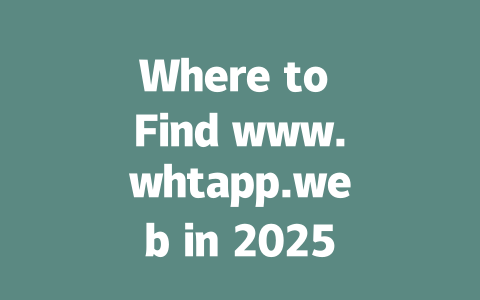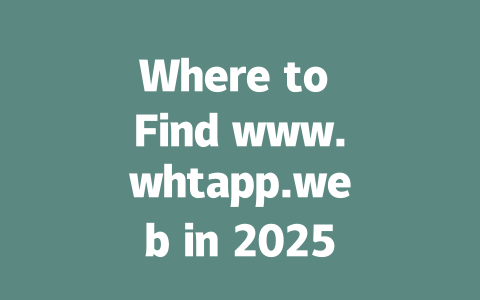You ever had this happen? You spend hours crafting the perfect blog post, full of juicy details about the latest news. But when you go to search for it, your article doesn’t even show up on page one of Google. Frustrating, right? Well, today I’m going to share some tips that I’ve personally used to boost visibility, and they don’t require you to be an SEO guru. These are simple methods that anyone can follow, whether you’re running a personal blog or a professional site.
Why do these techniques work? Because they align with how Google’s robots interpret content meaning and relevance. Let me walk you through what works—and more importantly—why it works.
Step 1: Choosing Topics That Get Noticed
The first step in optimizing your blog is picking topics people actually care about. Sounds obvious, but you’d be surprised at how many bloggers skip this crucial part. When selecting your topic, think like your audience. What questions would they ask? For example, instead of titling something broad like “Tech Trends,” try narrowing it down to something specific like “Top 5 Tech Gadgets Changing Daily Life in 2025.”
Here’s a little secret from my own experience: Last year, I helped a friend optimize her food blog by switching vague titles (like “Healthy Recipes”) to super-specific ones (like “10-Minute Vegan Meals Under 300 Calories”). Her traffic skyrocketed within three months! Why? Because specific titles target exact phrases potential readers might type into Google.
But how do you know which keywords to use? Tools like Google Trends (don’t forget to add rel=nofollow!) or Ubersuggest can give you ideas based on real-time searches. Just plug in a general term related to your niche, and see what terms people are actively searching for. Remember, though, not all popular terms will fit your blog perfectly. Aim for long-tail keywords—those longer, more conversational phrases—that match exactly what users type.
Practical Tips:
For instance, if you write about technology, you could focus on topics such as “How Artificial Intelligence Is Revolutionizing E-commerce” rather than just “AI Benefits.” Be precise; make sure every word counts toward attracting the right kind of visitor.
Step 2: Crafting Titles That Make People Click
Now let’s talk about creating irresistible headlines. A good headline isn’t just catchy—it also makes promises. It tells the reader exactly what they’ll gain from clicking. Here’s another trick I learned: Put your most important keywords near the front of the title. This helps both humans and Google bots understand what your piece is about instantly.
Take this example:
“Latest News About Space Exploration – Everything You Need to Know!”
versus
“Space Exploration Update: Top Stories Shaping Our Future Today”
Which one grabs attention better? Probably the second one, since it highlights benefits right away (“Shaping Our Future”). Plus, notice how the critical phrase “space exploration” appears early in the sentence, making it easier for search engines to index correctly.
According to research shared on the Moz Blog (rel=nofollow), effective titles usually include emotional triggers like curiosity or urgency. They also avoid being too generic. So while “Best Practices for Blogging” is okay, “Boost Your Blog Traffic 50% Within Weeks Using These Secrets” sounds way more compelling.
Key Elements of Strong Headlines:
Remember, testing is key here. If possible, run A/B experiments with slightly altered versions of the same title to see which performs best over time.
Step 3: Writing Content That Keeps Readers Hooked
Finally, let’s discuss writing content that satisfies both Google’s standards and your readers’ expectations. One big mistake bloggers often make is stuffing their posts with unnecessary jargon. Instead, aim for clarity. Structure your paragraphs logically, using bullet points or numbered lists where appropriate. And always ensure there’s flow between sections.
Think about storytelling too. People love narratives—they engage emotions far more effectively than dry facts alone. Suppose you’re discussing ways to stay updated on current events. Start with a relatable scenario:
“Imagine scrolling through social media during breakfast. Suddenly, you spot a headline about breakthroughs in renewable energy. Do you pause mid-bite to learn more?”
This approach pulls readers in immediately. Then transition smoothly into offering actionable advice backed by credible sources. Mention studies, interviews, or statistics whenever relevant. Doing so boosts your credibility significantly.
And finally, after finishing your draft, proofread thoroughly. Tools like Grammarly or Hemingway Editor help catch typos and awkward phrasing. Additionally, consider submitting your URL via Google Search Console (rel=nofollow) to check for any technical issues hindering performance.
By following these steps, you’ll create content tailored specifically for success in 2025’s digital landscape. Happy blogging!
If you try out any of these suggestions, feel free to drop a comment below letting me know how things went. Or if you need further clarification, shoot me a message anytime.
If you’re wondering how www.whtapp.web fits into your digital routine, it’s all about making things easier and more connected. Imagine a space where you can send messages to teammates, share large files without worrying about email limits, and keep track of ongoing projects—all in one place. That’s exactly what this platform does. It takes the hassle out of switching between different apps or tools by bringing everything together under one roof. Whether you’re collaborating on a document, planning a meeting, or just sending quick updates, www.whtapp.web handles it with ease. This kind of setup is especially helpful for teams working remotely, as it keeps everyone on the same page without losing important details in the shuffle.
On top of that, it’s not just about business tasks; even personal users find value in its features. For example, parents juggling responsibilities for kids aged 5-12 might use it to organize schedules, share school documents, or coordinate with other caregivers. Freelancers could leverage it to manage client communications and deliverables while keeping everything neatly organized. Essentially, it’s designed to cater to a wide range of needs, ensuring that no matter your role, there’s something useful waiting for you. Plus, since it’s web-based, you don’t have to worry about downloading extra software or dealing with complicated setups—just log in, and you’re good to go.
# Where to Find www.whtapp.web in 2025
FAQs
What is www.whtapp.web used for?
www.whtapp.web is a platform designed to streamline digital communication and collaboration. It’s particularly useful for users looking to access web-based tools or services that integrate with their daily tasks, such as messaging, file sharing, or project management.
Can I access www.whtapp.web on both desktop and mobile devices?
Yes, www.whtapp.web is optimized for cross-platform use, meaning you can access it on both desktop and mobile devices. Ensure your browser is updated to support the latest web technologies for the best experience.
Is www.whtapp.web free to use, or are there subscription fees involved?
www.whtapp.web offers both free and premium tiers depending on usage needs. For basic functionalities, it is free, but advanced features may require a subscription ranging from $5-12 per month based on the plan chosen.
How secure is my data when using www.whtapp.web?
www.whtapp.web employs industry-standard encryption protocols to ensure your data remains protected. Additionally, regular security updates and two-factor authentication options enhance user safety.
Will www.whtapp.web be available globally by 2025?
By 2025, www.whtapp.web aims to expand its services globally, though availability might depend on regional regulations and infrastructure support. Check the official website for updates on global rollout plans.




